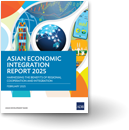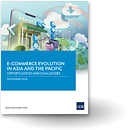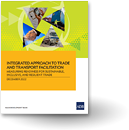The brave new world of digital manufacturing and what it might mean for trade policy
Three dimensional printers can make everything from solid-fuel rockets to nano-particles. This technology is part of a set of processes known more generally as digital manufacturing. Although some controversy exists as to what these terms mean exactly, the definition used by 3D Systems describes it as a process which "takes digital input from three-dimensional data and creates solid, three-dimensional parts through an additive, layer-by-layer process".
Although this technology has been around for over a decade, it is only recently that its implications for large-scale manufacturing have become apparent. Over the last few years, headlines have appeared hailing digital manufacturing as the advent of the third industrial revolution and even suggesting it might change the world. It is probably safe to say that digital manufacturing will be at least as disruptive to established modes of production across many industries as digitization has proven for, say, the music industry, print media, or retail shopping. This is also likely to have far-reaching implications for trade policy.
There are two features of this "new" form of manufacturing which may have implications for international trade policy. The first of these is that digital manufacturing may allow for a move from mass production to mass customization. Production then takes on the quality of supplying a service rather than producing a good. Digital manufacturing may therefore be largely governed by trade rules on services.
The implications of manufacturing being governed by services rules come from the fact that the WTO and many PTAs schedule liberalization commitments on what is known as a "positive-list" basis, meaning that governments are only bound to liberalize their services markets to the extent explicitly scheduled. Because manufacturing services are typically not among the services sectors that figure in scheduling documents, countries which have liberalized their services markets on a positive-list basis would be under no obligation to liberalize manufacturing services, whereas those countries that have liberalized on a negative-list basis would presumably be obliged to allow foreign manufacturing services suppliers to contest the domestic market for these services.
The second way digital manufacturing may impact trade and production might be through its impact on international supply chains, since it will result in goods being produced in closer proximity to where they are consumed - unlike production networks today which in many sectors (textiles, autos, electronics) are highly fragmented across various. This feature of digital manufacturing may impact the way states use several trade policy instruments, including rules of origin and tariffs, and also the way trade statistics are recorded.
Rules of origin are a set of principles that determine the origin of a good when it enters the customs territory of a country. The mechanics of rules or origin determinations are exceedingly complex; suffice to say here that the general principle which has informed the drafting of most rules of origin is that goods are attributed the origin of the country in which the last substantial transformation took place. In a future characterized by digital manufacturing, this is likely to be the country where the good is both produced and consumed, but because the finished manufactured product will not physically cross a border, it will not be subject to any determination as to its origin.
Any rule of origin determination that is made is thus likely to be on the chemicals and raw materials as they are imported. Because many chemicals are subject to zero or very low tariffs under the WTO's Chemical Tariff Harmonization Agreement (CTHA) , this could also mean that the more ubiquitous digital manufacturing becomes, the less tariff revenue governments will collect at their borders for imported manufactured goods. By the same token, the mechanics of tariff escalation, by which duties are generally lower on raw materials than on processed or advanced products, is likely to reinforce this downward trend on tariff revenues.
Digital manufacturing may also impact trade through its impact on trade statistics, since new ways of recording the country of origin of digitally manufactured goods will need to be developed. The WTO's Made in the World initiative--which seeks to attribute origin on the basis of value added - is a tentative move in this direction, although it owes its origins more to the realities of global supply chains than it does to the advent of digital manufacturing.
Clearly, there is much conceptual work to be done by both policymakers and researchers interested in the trade impacts and policy implications of digital manufacturing. Some tentative implications can thus be summarized as followed: Digital manufacturing is likely to become subject to trade rules on services, even though these rules do not yet explicitly contemplate this service sector; Because they do not cross any border in their final manufactured state, digitally manufactured goods are largely likely to escape trade barriers such as tariffs, quotas, and anti-dumping duties.




